The 2021-22 academic year has been a remarkable demonstration of creativity and commitment. In the face of continued challenges in our complicated world, artists are visionaries, researchers, and makers working with communities across our campus and region to reimagine societal systems because they have the capacity to imagine different ways of being. Since assuming the role of the university’s first full-time vice president for the arts in February 2022, I’ve had the incredible honor to engage with the many faculty, staff, students, and guest artists across our campus. Our arts community is dynamic and energized — and the momentum is palpable.
More than ever before, we understand that art is essential, art is consequential, and so much is possible when we come together. Art can be a powerful strategic force capable of shifting perspectives and driving meaningful social and cultural change. At Stanford, we are committed to unleashing the full potential of the arts on campus and community life.
I invite you to read on as we look back at our accomplishments and experiences from 2021-22.
Deborah Cullinan
Vice President for the Arts
A LOADED CAMERA: GORDON PARKS, on view at the Cantor Arts Center
A Loaded Camera: Gordon Parks was on view at the Cantor Arts Center during the winter and spring quarters. The exhibition celebrated the artistry and impact of Parks’ documentary photography. His work as a photographer, writer, composer, and filmmaker repeatedly broke barriers set against African Americans. For the self-taught Parks, born to a family of 15 children in a segregated Kansas town, taking a photograph was never a neutral act. He famously wrote that early on, he understood his camera to be a “weapon against all the things I dislike about America – poverty, racism, discrimination.” Read more about the artist and the exhibition here.

ANITA STECKEL: THE FEMINIST ART OF SEXUAL POLITICS, on view at the Stanford Art Gallery
In February 2022, the Department of Art and Art History presented the exhibition Anita Steckel: The Feminist Art of Sexual Politics at the Stanford Art Gallery accompanied by a virtual symposium titled Anita’s Call to Arms: Radical Art, Politics, and Teaching. Curated by Richard Meyer, Robert and Ruth Halperin Professor in Art History at Stanford, and Rachel Middleman, associate professor of art history at California State University, Chico, the exhibition was the most comprehensive presentation of Steckel’s art to date. Throughout her career, the audacious American feminist artist confronted issues of gender inequity, objectification, female desire, and social injustice. The title of the exhibition cites Steckel’s show at Rockland Community College in 1972, which was attacked by local politicians for its sexual content. Take a virtual tour of the exhibition and watch the recorded symposium here.

THE ARTFUL INTERPRETER, taught by Sara Michas-Martin
On a spring overnight trip in 2022 to Stanford’s Hopkins Marine Station in Pacific Grove, students in the course The Artful Interpreter found themselves in a place famous for art, science, and the intersection of the two. That outing had all the elements a student might expect of a Monterey-Bay-adjacent retreat – whale watching, tidepooling, building bonds with classmates, and taking a break from campus life. It was also instructor Sara Michas-Martin’s ingenious way of creating a special atmosphere conducive to a science-themed creative writing workshop. Read more about the course here.

AS SOON AS IMPOSSIBLE, a TAPS production
Arab American playwright Betty Shamieh’s play, As Soon As Impossible, was developed while she was a virtual Stanford Denning Visiting Artist with the Department of Theater and Performance in 2020-21 and performed in fall 2021 with Stanford students and faculty as cast and crew. Directed by Assistant Professor Assistant Professor Samer Al-Saber, the play is a comedy that explores the relationship between two older men, an Iraqi American and a white Anglo-Saxon Protestant, whose annual summer fishing trip is interrupted by the unexpected appearance of Ramsey’s granddaughter, Layla. The play is ultimately about friendship in a time of war. Learn more about the production from the TAPS microsite here.

DECOLONIAL THEORY AND PRAXIS IN ART, FILM, AND MEDIA, presented by the Department of Art and Art History
Assistant professors in the Department of Art and Art History Usha Iyer and Emanuele Lugli organized the May 2022 public symposium titled Rethinking Our Disciplines: Decolonial Theory and Praxis in Art, Film, and Media. Five speakers – Liza Black, Kara Keeling, Laura Huertas Millán, Yvette Mutumba, and Françoise Vergès – engaged with questions of indigeneity, race, queerness, gender, and marginalized epistemologies in their scholarship, curation, filmmaking, and pedagogy.

FASHION FABLE, a Chocolate Heads/Cantor Arts Center collaboration
Fashion Fable, a dance and runway event in February 2022, marked the long-anticipated return of the Chocolate Heads to the Cantor Arts Center. The performance brought together contemporary dance, live music, a fashion presentation, and visual installation in celebration of beauty in all of its forms, metamorphosis in all of the ways one can imagine, and a rich proposition to awaken the muses.

HELLO, by Xu Zhen
A seemingly ancient Greek column topped with a Corinthian capital sits coiled and watchful atop the bowl of Meyer Green. Installed in February 2022, Hello, by international conceptual artist Xu Zhen, is the inaugural commission for the Stanford Plinth Project. The work fuses the classical Greek column shape and the snake’s aggressive biological attitude to stimulate viewers’ perception and experience of classic civilization. The moment the viewer’s eyes come across the Corinthian capital also represents a confrontation with the depth of history and culture. With the increasingly frequent blending and impacts among global civilizations, the work constitutes both a reality and a metaphor for encountering civilizations of different times and space. Watch a video and read more about the artist and the artwork here.

JOSQUIN RESEARCH PROJECT, by Jesse Rodin
The 15th-century French composer and singer Josquin des Prez, or “Josquin,” as he is commonly known, achieved the Renaissance equivalent of rock star status. Despite his fame, many details of Josquin’s life and career are hazy, and a big mystery of early music is how many of the several hundred musical compositions attributed to Josquin were actually written by him, according to Stanford musicologist Jesse Rodin, associate professor of music. He recently evaluated the authorship of the 346 pieces of music attributed to Josquin (1450–1521) using an approach that blends scientific rigor with methods from the arts and humanities. As part of this massive undertaking, Rodin created the Josquin Research Project, a searchable, online database of music by Josquin and his contemporaries. Read more about the project and database here.
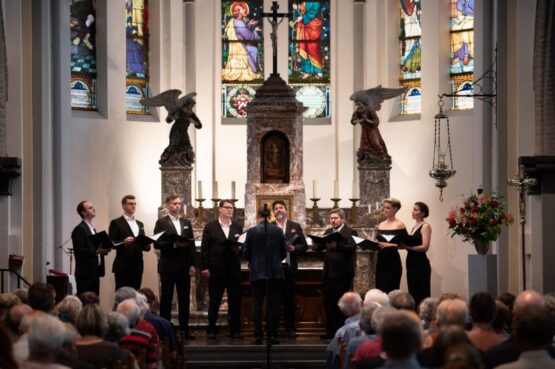
A MIDSUMMER NIGHT'S DREAM, a TAPS production
Coming from the heart of a writer whose fan base remains strong after 400 years, A Midsummer Night’s Dream celebrates love, youth and the beauty and mysterious power of nature. It’s a comedy about the yearning of human beings for restoration, both of nature and of themselves, but in the COVID era of 2021-22, the play was also about the return to life. The Department of Theater and Performance Studies production, directed by artist-in-residence Amy Freed, was originally planned for the spring of 2020, but the pandemic prevented it from being staged. Two years later, the creative process had to be reimagined from the ground up. The production moved outdoors to better align with pandemic safety procedures and the final product was an example of artistic ingenuity. The coming of light, it seems to say, requires a plunge into darkness. Learn more about the production from the TAPS microsite here.

REQUIEM: FIRE IN THE AIR OF THE EARTH, presented by Stanford Live
In a brilliant collaborative feat, choreographer and MacArthur Fellow Kyle Abraham and groundbreaking producer, composer, and EDM artist Jlin breathed new life into Mozart’s Requiem in D minor in December 2021. Requiem: Fire in the Air of the Earth joins the ranks of Abraham’s spiritually-rigorous repertory: works that poignantly move through themes of grief, turbulence, and rebirth. For this piece in particular, the wellsprings of inspiration range from Greek mythology and the Roman goddess Minerva, to Egyptian gods and goddesses, Yoruba folktales, and the works of Octavia Butler. This vast array of muses are fragments of the much bigger world that Requiem submerges viewers in, a world that bends toward Afrofuturism. Read more about the production here.

RICOCHET, a TAPS production
The June 2022 student-choreographed dance concert Ricochet was a practice in artistic innovation in response to COVID. It pushed student art-makers to think outside of their typical performance space and to draw inspiration from the challenge of producing work outdoors; in this case the Science and Engineering Quad. Department of Theater and Performance Studies dance lecturer and director of the production Diane Frank writes, “In moving out of the traditional proscenium theater, we also let go of its traditional expectations, making us perhaps more open to the pleasures of the unexpected when we chance upon it. By placing unexpected events in familiar places, we are free to find the extraordinary within the ordinary, and our senses are refreshed.” Learn more about the production on the TAPS microsite here.

VIRTUAL PEOPLE, taught by Jeremy Bailenson
Ask students in the Virtual People course what they did in class on any given day during the fall 2021 quarter and you’ll get some surprising answers. The students might have floated in space, gaping down at planet Earth below. They might’ve swum amid a beautiful coral reef watching – with each passing second representing years – as climate change caused the reef’s ruin. The students might’ve gone for a walk, but as a person with a skin color different than their own and subjected to prejudice. The Virtual People course is among the first and largest courses to be taught almost entirely in virtual reality, or VR, with several hundred students in the summer and fall courses. These students participate in the all-remote class via a VR headset, worn over their eyes like an opaque scuba mask, plus two handheld controllers to move about the virtual environments. Taught by Jeremy Bailenson, Thomas More Storke Professor and the founding director of Stanford’s Virtual Human Interaction Lab, the course examines VR’s expanding and evolving role in areas including popular culture, engineering, behavioral science and communication. Read more about the course here.

WENDY RED STAR: AMERICAN PROGRESS, on view at the Anderson Collection
Wendy Red Star: American Progress, on view at the Anderson Collection during the spring and summer quarters, was a solo exhibition of works by the artist Wendy Red Star, who was raised on the Apsáalooke (Crow) reservation in Montana. With historical research, Stanford student collaborations, large-scale installations, and images of sovereignty, Red Star asked viewers to grapple with the layered complexity of American history. She addressed the racism, displacement, and culture surrounding the United States’ westward expansion in the 19th century with works created specifically for the exhibition. Read more about the artist and the exhibition here.

ADRIAN L. BURRELL, IDA visiting artist
Stanford alum Adrian L. Burrell, the 2022 Visiting Artist for Institute for Diversity in the Arts (IDA), taught the winter quarter course Still Waters Run Deep, Troubling The Archive with Filmmaking and Photography through IDA partner programs Comparative Studies in Race and Ethnicity and African and African American Studies. In this course, students used lens-based filmmaking and photography as a form of storytelling to create individual projects that explored their own family, community, environmental histories, and narratives. During his time as an IDA visiting artist, Burrell also worked on his first feature-length script, Cousins.

APART-TOGETHER, by Lauren Toomer
The finishing touch for Apart-Together came quite by accident. Art and art history lecturer Lauren Toomer, MFA ’15, was invited to create a visual element for Stanford Medicine’s COVID-19 Remembrance Project. She had settled on a sculpture made of wood from the campus environs. Intertwining branches would emerge from three stumps representing the university, the School of Medicine and Stanford Health Care. But in the process of playing around with her materials, Toomer ended up constructing little flowers. That’s when it clicked: Instead of using flags to represent lives lost to COVID-19, as had been the plan, she would invite community members to paint 600 wooden petals in memory of the then 600,000 people in the United States who had died in the pandemic. The flowers and Toomer’s sculpture were placed in front of the Angel of Grief statue and dedicated in a ceremony that included musical performances on October 6, 2021. Toomer hopes each petal will act as a reminder that, behind the numbers, there were unique people. Watch the video “Meet Lauren Toomer” here.

ARTS PARTY LIVE
Arts Party Live at Frost Amphitheater in October 2021 was part of We are Stanford: A Festival of Reflection and Renewal. The festival marked the return of the full Stanford community to campus, offering a diverse range of ritual, artistic, commemorative and celebratory programs to express and hold all that students had been through, individually and collectively, over the last 18 months. Two dozen campus departments and programs partnered to present events that were authentic to their communities and open to broad student, staff, and faculty participation, engaging themes of grief, loss and remembrance, community and gratitude, and hope and joy. Over 800 students attended and saw performances by Stanford DJ Society, Alliance Streetdance, Legacy, Common Origins, and Stanford Swingtime. 3,000 churros and ice cream bars were devoured.

THE FACES OF RUTH ASAWA, on view at the Cantor Arts Center
For decades, hundreds of masks created by the sculptor Ruth Asawa of her friends and family hung on the garden wall of the artist’s San Francisco home in the Noe Valley neighborhood. The majority of that collection is now treated by a conservator and on display at its second home, the Cantor Arts Center. This significant acquisition and installation, titled The Faces of Ruth Asawa, is part of Stanford’s Asian American Art Initiative. “Ruth Asawa is so deeply admired in the Bay Area as an artist and for the impact she had as an arts education advocate. As recognition of her significance expands across the globe, we are honored to help expand the public perception of her legacy,” said Veronica Roberts, John and Jill Freidenrich Director of the Cantor. Read more about the installation here.

HONORS IN THE ARTS SYMPOSIUM, a Stanford Arts Institute program
Sixteen student artists spent 2021-22 in the Honors in the Arts program creating deeply innovative and interdisciplinary projects across a wide spectrum of media: poetry, fiction and creative non-fiction, film, photography, digital and visual art, screenwriting, playwriting, theatre, and dance. At the end of the year, the cohort created video essays to present their capstone projects or presented their projects at a live symposium in May 2022. See all of the student projects here.

ISKWĒ, presented by Stanford Live
September 2021 performances by Juno Award-winning electro-pop artist iskwē, which translates to “blue sky woman,” spotlighted the importance and plight of Indigenous peoples and territories in Canada. Bing Concert Hall was transformed into an immersive, multispace venue for the first time, with iskwē’s theatrical concert beginning in the Artist’s Garden, moving to the Bing Studio, and then to the concert hall. Through visual installation and lighting, Indigenous instrumentation and vocals, and live movement and dance, the enigmatic and intensely visceral concert experience centered on internal transformation over time––the emotive powers of the seasons, catharsis and creation, the resilience and survival of Indigenous people, and the lasting power and hope that follows transformation. Watch her Bing Concert Hall performance here.

PALI, a TAPS production
The brainchild of TAPS Ph.D candidate Suhaila Meera, this production was part of her dissertation research on depictions of borders and immigration in theater. Pali was an adaptation of Bhisham Sahni’s short story of the same name that tells a story of a family split during the 1947 Indian-Pakistani Partition. Most Indian and Pakistani student actors had never performed in theater before, and many were drawn to the project because it shared a story so central to their culture. Before performances, a “pre-show remembrance walk” introduced sold-out audiences to the history and impact of the Partition. Curated by students, the walk circled the Roble Gym courtyard and included projections of historic photos and video, as well as individual stories of family separation. The production also included traditional Indian dance, choreographed by student dancers to enhance the narrative. Learn more about the production from the TAPS microsite here.

REACHING TOWARDS WARMER SUNS, an Anderson Collection installation
Kiyan Williams’ Reaching Towards Warmer Suns, was a temporary public work on view on the grounds of the Anderson Collection, among a grove of oak trees, during the fall quarter 2021. The piece was originally installed along the banks of the Powhatan River (James River) in Richmond, Virginia, where some of the first enslaved Black people touched land in the new/ruined world. The work is made of soil from the river and emerged from artist and Stanford alum Kiyan Williams’ time along the slave docks of Virginia within the context of the pandemic and protests against on-going anti-Black police violence. Williams explained how the sculpture arose from a need to mark the paths of slavery as sacred, and “memorialize on-going struggles of self-determination for Black people.” Watch a recorded conversation between Williams and A-lan Holt, director of the Institute for Diversity in the Arts here.

DO_NOT_REMOVE
STANFORD JAZZ WORKSHOP 50TH ANNIVERSARY
When Jim Nadel graduated from Stanford with a degree in music in 1972, he was deeply steeped in jazz. He spent the summer listening, practicing, and playing his saxophone with friends while thinking about his next steps. It struck the aspiring musician that the many different approaches to playing jazz must also mean there were many different ways of learning it – and teaching it. Nadel’s idea to introduce young musicians to the diverse global expressions of the form through a myriad of jazz performers and performances in a workshop setting blossomed that summer into the Stanford Jazz Workshop, an immersive learning opportunity for student musicians on the Stanford campus. Fifty summers later in June 2022, the festival honored founder and artistic director Nadel for his five-decade commitment to jazz education at Stanford. Read more about Jim Nadel and Stanford Jazz Workshop here.

STANFORD GLOBAL STUDIES PHOTOS, a juried competition
A black and white photograph of a taxi ride to the Mosque of Muhammad Ali in the heart of the Citadel of Cairo was the grand prize winner of the 11th annual Stanford Global Studies (SGS) student photo contest. Dozens of students submitted photos of their experiences outside the classroom, both here and abroad. The annual SGS competition offers students who have conducted international research, language study, and internships an opportunity to showcase their photography skills and share their experiences. See all the winning photographers here.
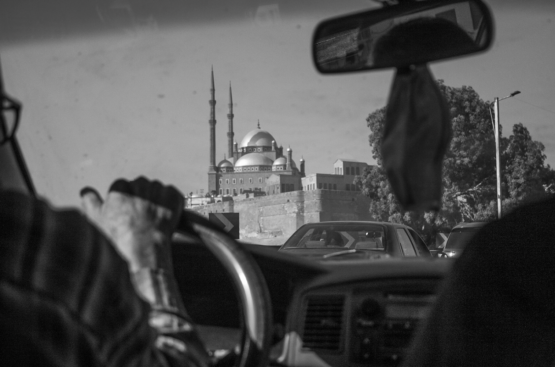
PORTRAIT OF A THIEF, by medical student Grace Li
The COVID-19 pandemic hit as Grace D. Li was finishing her first year of medical school. She found herself stuck at home, attending classes on Zoom and barred from setting foot in a hospital. Frustrated, the 26-year-old Stanford medical student turned to a passion project waiting on her computer: a novel she had started a few years earlier. The result is Portrait of a Thief, a heist caper published in April 2022 that turns on breakneck action, fast cars and a thoughtful exploration of Western colonialism and the complexities of Chinese diaspora identities. The book was a bestseller and Li is the executive producer of an upcoming Netflix series based on the book. Read the full Los Angeles Times review here.

ARTS LEADERSHIP APPOINTMENTS

VICE PRESIDENT DEBORAH CULLINAN, Office of the Vice President for the Arts
Deborah Cullinan was appointed vice president for the arts in February 2022.

PROFESSOR AND DIRECTOR JEAN MA, Stanford Arts Institute
Jean Ma was appointed the Denning Family Director of the Stanford Arts Institute in September 2021.

DIRECTOR VERONICA ROBERTS, Cantor Arts Center
Veronica Roberts was appointed the John and Jill Freidenrich Director of the Cantor Arts Center in July 2022.
FACULTY AND LECTURER ARTS PRACTICE AND RESEARCH
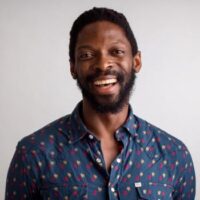
LECTURER ROTIMI AGBABIAKA, Theater and Performance
In December 2021, Rotimi Agbabiaka played Aladdin in the panto The Magic Lamp at the Presidio Theatre Performing Arts Center in San Francisco.

ASSISTANT PROFESSOR SAMER AL-SABER, Theater and Performance
Samer Al-Saber edited and wrote the introduction to the anthology To The Good People of Gaza: Theatre for Young People by Jackie Lubeck and Theatre Day Productions, published in July 2022.

ASSISTANT PROFESSOR PATRICIA ALESSANDRINI, Music
Patricia Alessandrini was named a 2022 Guggenheim Fellow in April 2022.

PROFESSOR MARK APPLEBAUM, Music
Mark Applebaum’s music composition Venture Capital Punishment premiered by Talea Ensemble at Finland’s Time of Music festival in July 2022.

LECTURER TAYLA BERGER, Music
Talya Berger transcribed and edited the partbooks of the Altemps codex with historical and analytical context for Varia Musica Sacra, published in April 2022.
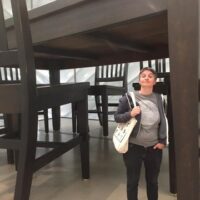
ASSOCIATE PROFESSOR TERRY BERLIER, Art Practice
The multimedia installation and concert co-created by Terry Berlier titled A Kind of Ache debuted at The Clarice, University of Maryland, in December 2021.

LECTURER WILLLIAM BREWER, Creative Writing
William Brewer’s novel The Red Arrow was published in May 2022.
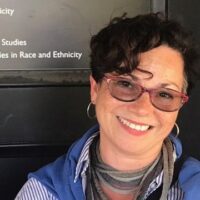
PROFESSOR JENNIFER DeVERE BRODY, Theater and Performance
Jennifer DeVere Brody was named a 2022 Guggenheim Fellow in April.

PROFESSOR SCOTT BUKATMAN, Film and Media
Scott Bukatman’s book Black Panther was published in July 2022.

PROFESSOR ENRIQUE CHAGOYA, Art Practice
Solo exhibitions of Enrique Chagoya’s work opened at Edgewood College Gallery in Madison, Wisconsin, in March 2022 and at the Pendleton Center for the Art in Pendleton, Oregon, in August 2022.

LECTURER RICHIE HOFMANN, Creative Writing
Richie Hofmann’s poetry collection A Hundred Lovers was published in February 2022.

LECTURER STEPHANIE HUNT, Theater and Performance
As part of a fundraiser for the Ukrainian people, Stephanie Hunt acted in a reading of two short stories by Ukrainian writer Oksana Zabuzhko in April 2022.

DEPARTMENT CHAIR AND ASSOCIATE PROFESSOR JAROSŁAW KAPUŚCIŃSKI, Music
Jarosław Kapuściński music and dance collaboration with premiered at ODC in San Francisco in June 2022.

ASSISTANT PROFESSOR SRDAN KEČA, Documentary Film and Video
In November 2021, Srđan Keča’s feature-length documentary film Museum of the Revolution premiered at the International Documentary Festival Amsterdam where it was nominated for Best First Feature.

DEPARTMENT CHAIR AND PROFESSOR PAVLE LEVI, Film and Media
Pavle Levi’s book Hypnos in Cineland was published in May 2022.

ASSOCIATE PROFESSOR DIANA LOOSER, Theater and Performance
Diana Looser’s book Moving Islands: Contemporary Performance and the Global Pacific was published in September 2021.

LECTURER MURRAY LOW, Music
Murray Low played the piano on Live at the Baked Potato!, the CD release by the jazz trio Charged Particles in November 2021.

PROFESSOR JISHA MENON, Theater and Performance
Jisha Menon’s book Brutal Beauty: Aesthetics and Aspiration in Urban India was published in October 2021.

PROFESSOR RICHARD MEYER, Art History
Richard Meyer’s book Master of the Two Left Feet: Morris Hirshfield Rediscovered was published in September 2022, followed by the opening of the exhibition Morris Hirshfield Rediscovered at the Folk Art Museum in New York, which Meyer curated.

PROFESSOR PATRICK PHILLIPS, Creative Writing
Patrick Phillips’ poetry collection Song of the Closing Doors was published in August 2022.

ASSISTANT PROFESSOR MICHAEL RAU, Theater and Performance
Michael Rau directed Temping to rave reviews at the Edinburgh Festival Fringe in August 2022.

PROFESSOR RICHARD VINOGRAD, Art History
Richard Vinograd’s book Facing China: Truth and Memory in Portraiture was published in May 2022.